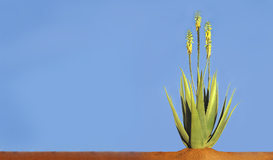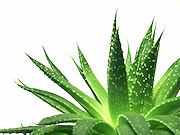
 "When health is absent, wisdom cannot reveal itself, art cannot manifest, strength cannot fight, wealth becomes useless, and intelligence cannot be applied." ~ Herophilus
0 Comments
Posting a very important and yet disregarded issue of GMO's in so much of our food source. I have been attempting to share this with people for many years now, however I have found that most people would like to ignore these facts (ignorance is bliss), yet this issue persists and is hurting our health! Regardless, recieved this information from (NaturalNews) and just had to share it with you...
A GMO, or genetically modified organism, is a plant or animal that has been genetically engineered to create a specific set of traits including size, shelf life and color vibrancy. While this bio-technology is still in a relatively early stage of development, there are already concerns regarding the potential dangers it poses. Most concerns about genetically modified foods fall into one of three categories: environmental hazards, economic concerns and human health risks. This article will outline the environmental hazards of GMOs. Environmental Hazards of GMOs Out-crossing According to the World Health Organization (WHO), there is a very real risk of out-crossing, which refers to the transfer of engineered genes (transgenes) from genetically modified crops to conventional, cultivated plants or to related crop species in the wild. This may happen by means of wind, insect pollination, or other transfer. The foreign genes can cross with and contaminate these other species, resulting in a hybridization of the genetically modified crop plant with a non-GMO plant. This could radically alter entire ecosystems if the hybrid plants thrived. Out-crossing can also have an indirect effect on food safety and security, as the contaminated species make their way into the food chain. In a September 2010 paper, for example, the World Health Organization reports an incident in which traces of a GM variety of corn that was only approved for use as livestock feed was found in corn products intended for human consumption in the U.S. market. Increased Use of Herbicides and Pesticides Scientists estimate that crops that are genetically modified to be herbicide-resistant tend to greatly increase the herbicide use. Knowing that their crops are more herbicide tolerant, farmers are more likely to use these often-toxic chemicals more liberally. Many genetically modified crops are engineered to produce their own pesticides and may even be classified as pesticides by the EPA. This strategy, in turn, adds even more pesticides into our fields and food than ever before. Unintended harm to Non-target Organisms A 1999 laboratory study published in Nature showed that pollen from B.t. corn, a variety of GM corn, resulted in high mortality rates among monarch butterfly caterpillars. Even though these caterpillars feed on milkweed plants, not on corn, there is a concern that if pollen from the B.t. corn is blown into a neighboring field with milkweed plants, the caterpillars would consume it and perish. The potential risk posed to non-target organisms remains the subject of acrimonious debate. by Author: John Dill Here, I will decide what was most significant today and is it just like any other day?
No, definitely not, not today or any other day! First this needs to be said, is that every day there are new and amazing discoveries, it all depends on what you choose to put your focus on. Or as Abraham would say "its what you choose to think about that you will create, vibrate... Thoughts are powerful vibrations! The first Law that I believe and understand is the Law of Attraction, (what you think about you vibrate hence attract) the second law is the Law of Deliberate Creation (you are the deliberate creator of your reality) and then third law the Law of Allowing which is the ultimate goal (what will be will be & all is supposed to be as it is & its okay with the way it is). Okay I won't get too much into Abraham right now but this is also the way I truly think-believe-feel! Back to what I came here to really say...well I obviously meant to say what I just said or I wouldn't of said it!!! Upon all the challenges and struggles that we endure in life, we ultimately need to make a choice. Live life or allow life to live you! I guess it always comes back to that! You choose! I could give you my contrast that I feel that I endure all the time but it will for sure sound too negative. I do however realize that it is contrast and thats what keeps me sane. Contrast is there for us to learn...Boy oh boy "what doesn't kill you only makes you stronger or smarter"?! I should be feeling real strong, smart?! Its like the little train that could or is that should! Making a rule for my blog. Only speak of the positive. Let us only bring good thinking thoughts. So, tonight I bought a lottery ticket. I will write that I win, please please come to me...!!! LOL ;-) Let me not look at this from lack yet its lack that brings me to think of this! Would love to ask Abraham about that! Well, in some ways I just did! Seriously though I am getting tired of waiting, opps is that negative! Boy that rule didn't last too long! Here's a positive thought "Breath in the joy of the moment" . Don't think too much of the lack don't focus on it. Change your thoughts to bring only good feeling thoughts. So I say to you now good-night, sleep well and hope that all your dreams are ones of joy...until next time. Joy is yours! Sonia <3 Article on Aloe Vera, Myth or Medicine? by Dr Peter Atherton M.B.Ch.B., D.Obst. R.C.O.G., M.R.C.G.P. About the Author: Dr Peter Atherton is currently a research Fellow at Oxford University studying the medicinal effects of Aloe Vera. ------------------------------------------------------- It was about three years ago, whilst I was a full time General Practitioner, a job that I had been doing both at home and abroad for twenty eight years, that I came across Aloe Vera. I had vaguely heard of it as an addition to various cosmetic products, but I was completely ignorant of its origin and unconcerned about its actions. I was certainly unaware of its fabled medicinal properties and as a strictly conventional physician I had no interest in any form of complementary or alternative medicine. In fact, I was almost dismissive of claims made by alternative practitioners and felt they largely achieved their 'cures' by way of a placebo effect. So I left it to others to indulge in acupuncture and applied kinesiology – what was that anyway? Should anyone have told me that within three years of my meeting with a mother, whose son's eczema had totally cleared with an Aloe Vera and Bee Propolis cream, that I would be researching its medicinal uses full time, I would have laughed. But it happened. That meeting was to totally change my medical perspective and in fact to change my life. At first I couldn't accept that Aloe Vera combined with Bee Propolis (the sticky resinous substance collected from various tree barks and buds by bees with which they line their hives creating a sterile environment) could suppress this atopic or juvenile eczema, where all my moisturisers and steroid creams had not. It was even more upsetting because my special interest in Medicine was dermatology and I thought I knew a bit about it. What was in this stuff? Why did it work? I was already sure it wasn't a placebo effect so my search for a scientific explanation began. I began this search by reading everything I could about the plant's history, for by now I at least realized that it was a succulent (Liliaciae Sub species aloinae), a member of the lily and onion family, also related to garlic and asparagus, of which there are more than three hundred varieties but of which only a few had medicinal properties. It is generally accepted that the most potent was Aloe Vera Barbadensis Miller.
The name Aloe Vera or True Aloe probably stems from the Arabic word Alloeh meaning "Shining bitter substance". We still refer to "bitter aloes" describing the laxative drug still listed in the U.S. Pharmacopoeia today. This drug was made from the sap of the plant found under the hard green rind. It contains mainly aloin, chemically an anthraquinone, which has been known since ancient times to possess very powerful purgative action if used neat. Bearing in mind that severe constipation was a very serious problem in those days, it is not surprising that this extract of Aloe Vera was highly prized just for this action. I discovered that Aloe Vera has been used by mankind for several thousand years and over the centuries there have been many references to Aloe Vera in many cultures: from the ancient Egyptians, Greeks and Romans, as well as in the literature of the Indian and Chinese peoples. Several famous physicians such as Pliny the Elder, Dioscorides and Galen, the father of modern medicine, who first described how the circulation worked, all used Aloe Vera as part of their therapeutic armory. There are also many romantic tales about it, suggesting that the Egyptian queens Nerfertiti and Cleopatra used it as part of their regular beauty regimes. Supposedly Alexander the Great in 333 B.C. was persuaded by his mentor Aristotle to capture the Island of Socotra in the Indian Ocean for its famed Aloe supplies, needed to treat his wounded soldiers. Aloe is also mentioned in the Bible several times, for example, in St. John's Gospel, but this was in fact, Lignin Aloe, not Aloe Vera. Lignin Aloe is a tree whose scented bark was used for incense as well as an ingredient used in embalming the dead. The true Aloe has been endowed with such marvelous properties that over the years around the world it has been given many wonderful names such as Burn Plant, Medicine Plant, Wand of Heaven and Plant of Life. The first reference to Aloe Vera in English was a translation by John Goodyew in A.D. 1655 of Dioscorides' Medical treatise De materia Medica which he wrote in AD 70-90. Traders first brought Aloe Vera to London in 1693 and by 1843 considerable amounts were being imported to be made up into medicines. Throughout the 18th and 19th centuries it remained one of the main popular prescribed and over-the-counter medicines. Whilst discovering the fascinating history of Aloe Vera I was also experimenting with some Aloe products on myself and my family, and getting some remarkable results. Aloe Vera can be drunk as a nutritional health drink or tonic or it can be applied topically to the skin and scalp as creams and lotions. Like most natural remedies, Aloe works best when used fresh from the plant but it oxidizes rapidly when cut and exposed to the air. Unfortunately, it will only grow in warm, fertile areas and its main enemy is frost, so here it must be grown indoors. If one has access to a mature plant then the best way is to cut a leaf off it, fillet out the inner leaf gel and use it directly, but for most of us it is necessary to buy a preserved product. I think the product should remain as near to the natural plant as possible to achieve the correct balance of ingredients and be interfered with as little as possible, so I do not favor products that have either been heat treated, filtered, concentrated or powdered. When using it at home I saw the phenomenal effect it had as a first aid burn treatment – my wife often burns her hands on the Aga oven because the glove is never where it should be. She was very skeptical at first, but was truly amazed by the rapid pain relief, the speed of healing and the healing without a scar. She never even attempts to find the glove now!! No wonder it is called the burn plant! I had also discovered that the first really scientific research into Aloe Vera was carried out in the 1930s and 1940s into its effect on X-Ray burns.(1-9) I started drinking the gel daily and after about ten days noticed that chronic catarrh, a legacy of smoking for 20 years, had cleared up and more importantly I just generally felt much better. Reassured by experience and my reading which confirmed Aloe Vera as a tried, tested, extremely safe and non toxic remedy, I was prepared to try it out on some selected patients in my practice. My investigation at that time had shown that Aloe Vera seemed to work in two definite areas, firstly on damaged epithelial tissue and secondly on the immune system. An epithelium is an anatomical term that is defined as "a layer of cells that covers the surface of the body or lines a cavity that connects with it". So the skin, the largest of our body organs, is the largest epithelial tissue. It connects through the mouth with the lining of the gastro-intestinal tract as well as the lining of the nose and sinuses, the lining of the lungs and the genital tract. It is not surprising, therefore, that Aloe Vera will speed up the healing of a burn or some damaged eczematous skin just as well as it will heal a mouth ulcer or even a stomach ulcer or a problem of the bowel lining – all epithelial tissue. It is certainly not a panacea for all ills as, unfortunately, some people suggest. This action on surfaces and membranes rather than on solid organs defines its uses, and where it is appropriate its effect is often dramatic. Conditions which are caused by a disordered immune system such as asthma and some forms of arthritis also seem to benefit from Aloe Vera. Good results are even reported by sufferers from that ill understood condition M.E. (Myalgic encephalo- myelitis) or Post Viral Fatigue Syndrome. Evidence for improvement in this syndrome is purely anecdotal but recently an equine vet, Peter Green, carried out a trial and showed that Aloe Vera had a remarkable effect in horses suffering from a similar post viral debility. He got a tremendous response and actually was able to demonstrate that the white blood cell count, which is lowered by the illness to almost fatal levels, had returned to normal after Aloe Vera treatment. Unfortunately, there is no similar way of measuring the effect in humans as there is no demonstrable change in the blood picture. In the U.S., Carrington Laboratories have isolated one of the sugars from Aloe Vera, a long chain polysaccharide which is being trialed with AIDS patients. It has been shown in laboratory testing to be an immunomodulator, i.e. it can both enhance the immune response – very beneficial to AIDS sufferers whose response is very poor; but it would also seem to be able to slow down or retard the response where it is too much. A common example of such a response would be in hay-fever, where there is an over-reaction to grass pollen's Carrington Laboratories' product "Carrisyn" is already licensed for the treatment of a viral illness in cats, a form of feline leukaemia. The continuing development of this drug for human use is very exciting. The response of the immune system to attack by either bacteria, viruses or cancer cells is extremely complex, but part of it involves a system of messenger substances such as the interleukins and tumor necrosis factor called Cytokines. Cytokines activate cells such as neutrophils and lymphocytes to attack their targets. The attack may take the form of antibody production of direct engulfment by the cell – phagocytosis. By orchestrating the response the cytokine system can both enhance and retard activity, hence the polysaccharides in Aloe Vera which affect this system are referred to as immunomodulators. In order to understand the various ways in which Aloe Vera may work it is necessary to look at the constituents of the plant. There are over 75 known ingredients and they are all contained in about 1% of the plant, the rest being water, so they are obviously present only in small amounts. Their disproportionate action is thought to arise from the synergistic effect of these substances, i.e. they can be likened to working together as a team so that the total effect is greater than would be expected from the combined individual effect of each substance. When deciding which patients to select for a small pilot study of Aloe Vera in my own practice, my criteria were that a) they either had a disorder of an epithelial tissue, such as a skin problem, or b) an immune problem such as rheumatoid arthritis. I chose patients with chronic conditions that had not responded well to conventional therapy. At my suggestion most were keen to try it, and overall I was immensely impressed to find that I achieved roughly a 70% success rate across the board. Given that I was dealing with some of my most difficult cases I was tremendously encouraged. With the skin conditions I got my best results on atopic or juvenile eczema and confirmed what I had been told by the mother who first introduced me to it. The Aloe Propolis cream produced both a moisturizing, anti-inflammatory and anti-bacterial response. This resulted in softer, less itchy skin and reduced infection. It is infection that usually causes these children's eczema to flare up so I think the addition of bee propolis, a sort of natural antibiotic, is most useful. Two patients with chronically itchy skin (urticaria) settled down and several adult patients with acne rosacea where the facial skin is constantly red with pustule formation, also noticed a marked improvement with a reduction in their high colour by applying an Aloe Vera gel preparation twice a day. One particular elderly lady in her eighties who developed a traumatic ulcer on her skin was delighted to see it healing virtually on a daily basis over a few weeks, and once healed it was impossible to see where it had been as there was no scarring, a regular feature of Aloe Vera treatment. Many patients, after treatment with aloe for various skin problems, commented that their skin quality had improved and felt softer and smoother This is not surprising as Aloe Vera has been added to many cosmetic products for many years because of its known rejuvenating action. It achieves this in several different ways. Firstly the polysaccharides act as moisturisers, hydrating the skin. Secondly, aloe is absorbed into the skin and stimulates the fibroblasts to replicate themselves faster(10,11) and it is these cells that produce the collagen and elastin fibers so the skin becomes more elastic and less wrinkled. Aloe also makes the surface of the skin smoother because of its cohesive effect on the superficial flaking epidermal cells by sticking them together. It also possesses the ability to interfere with the enzyme that produces melanin deposits in the skin, preventing the formation of 'liver spots' which tend to form in ageing skin. If Aloe Vera is applied regularly and for long enough it will often cause established spots to disappear. The best demonstration of this effect that I have ever seen, was shown by Dr. Ivan Danhof, an American physician who has worked with topical aloe products in the cosmetic industry for 30 years. When testing new creams and lotions, being right handed, he always applied the material with the fingers of his right hand to the back of his left hand in order to test its texture, smell and penetrability. He now declares that he has one old hand and one young hand and indeed the comparison when he puts his hands together to show the backs, side by side, is quite remarkable. One hand is the typical hand of a seventy year old with thinning, wrinkled skin covered in a variety of blemishes, whilst the other, his left hand, is clear and smooth and looks 30 years younger. Although there is anecdotal evidence to suggest that Aloe Vera helps inflammatory conditions of the gastro intestinal tract such as gastritis, diverticulitis and colitis there is no firm evidence to support this. One paper has looked at Aloe Vera in the treatment of peptic ulcers with good results(12) and one paper by Dr. Jeffrey Bland(13) of the Linus Pauling Institute of Science and Medicine in California studied the results of Aloe Vera on the gastro intestinal tract of normal people. He found that Aloe Vera had several measurable effects. There was a faster movement of food through the bowel with better protein digestion and absorption, an increase in water in the stool made it bulkier, and a normalisation of stool bacteria, where there had previously been high levels of yeasts in some of the subjects. As a result of these findings I decided to look at the effect of Aloe on the Irritable Bowel Syndrome (IBS). This is an extremely common condition affecting probably more than five million people in the U.K. It is the commonest condition seen by the Gastro-enterologists in hospital clinics; yet most people do not even consult their doctor. The IBS is complex in its make up, and it is acknowledged that there is usually both a physical and a psychological component, resulting from stress. It is called a functional bowel disorder because if the bowel is examined it appears to be perfectly normal in every respect. There is no known cause and no uniformly effective conventional medical treatment. However, it can be extremely debilitating to the sufferers who complain of abdominal pain and bloating or intermittent diarrhea sometimes alternating with constipation. Occasionally there is passage of mucous. The physical disorder is thought to be a dysmotility or alteration in the normal smooth peristaltic movement of the bowel and so it seemed a good subject for Aloe Vera. As I hoped, regular consumption of Aloe Vera gel worked well in the majority of patients who tried it. One female patient was so pleased with her newly controlled bowel that she said "I can go shopping now with confidence – it's great". It is now my first line treatment for IBS. Unfortunately, in all cases where Aloe Vera suppresses symptoms they return after a few days if the drink is stopped, so taking Aloe Vera in no way results in a permanent cure. When looking at disorders of the immune system I selected some patients with arthritis, some with asthma and some with M.E. (Post Viral Syndrome). Only about 40-50% of the M.E. patients benefited from drinking the Aloe Vera, but I got a much better response from the arthritis and asthma sufferers. People with Arthritis, under the influence of Aloe Vera, were able to reduce the number of anti-inflammatory and pain killing tablets to a level where they ceased to get the usual side effects of abdominal pain and indigestion, whereas the asthmatics were able to cut down on their usage of inhalers, including the steroid inhalers. These effects were probably due to Aloe Vera's innate anti-inflammatory effect as well as its effect on the immune system. For various reasons it is generally not possible in general practice to do proper randomized controlled trials using just one's own patients but I am convinced that there is enough evidence available now to suggest that the properties of this amazing plant should be properly tested, to prove whether or not there is just a myth or real medicine here. I for one, hope to be a part of this exciting field of research over the next few years. Positive Health issue 20 June/July 1997 Heard this saying and found myself repeating it as it most definitely hit a cord and resonated with me. I have found that the more you attempt to change the more resistance you come across. We are such creatures of habit! That being said we all need to stop, recognize and accept our reality. Once we've accomplished that honest awareness only then can we find our way to change. Focus on the solution and not the problem...Change, not an easy thing to do when we've been so conditioned. However, our vibrations create the law of attraction (what you think, you attract) which brings us towards the reason of focusing on only the positive thoughts. Change is good, no its great! Without it we remain unaware of the potential and possibilities that this life has to offer. Sonia's food for thought... Awareness of Mind, Body and Spirit for ultimate well-being!
|
about the AuthorSonia is an advocate for 'Natural Holistic Alternatives' while sharing easy everyday solutions. Categories
All
Archives
June 2022
|








